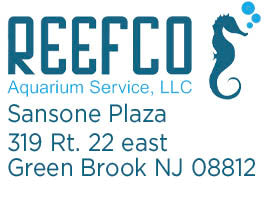How To Enhance Coral Coloration?
Maintaining coral coloration is something that even the most experienced reef hobbyist finds challenging. It is absolutely normal to be slightly (or excessively) obsessed with the coloration of your corals. Quite frankly, who wouldn’t want an epic display of vibrant corals to show off?
You’ve probably spent a fair amount of money on your coral display, and you want to be able to enjoy the beautiful colors.
In this article, we will look at why colors lose their coloration and ways that you can enhance their coloration.

Why Do Corals Lose Coloration?
Before we dive in, we should address why corals may lose their coloration in the first place…
Corals may lose their coloration from the following.
- Too much light
- High water temperatures
- Low water alkalinity
- Elevated levels of nitrates and phosphates,
However, changes in your coral’s coloration may not be an indicator of poor husbandry skills or ill health. Sometimes, corals will lose their coloration when they are first added to your aquarium, or even before that when they have arrived after a long journey from the store to your home.
This response is due to stress. Corals are animals, and therefore they are susceptible to stress, just like you and me. If this is the case, it is usually nothing to worry about.
Give your coral time to adjust to its new home, assuming that all your water parameters are within the recommended ranges, your coral will be back to its vibrant self in no time!
If it has been a while, and you notice your corals are still looking dull, then there are some ways that you can enhance coral coloration.
What Increases Coral Coloration?

There are five ways that you can enhance coral coloration inside your aquarium:
Good Lighting
Most aquarium corals are photosynthetic, which means they rely on symbiotic algae called zooxanthellae to convert light into energy via photosynthesis. This means that your aquarium lighting provides a portion of their nutritional and energy needs.
So, what does lighting have to do with coloration?
The zooxanthellae are what give your corals their beautiful and vibrant coloration because they contain chlorophyll. The number of zooxanthellae and the amount of chlorophyll directly affect your coral’s coloration. If too many zooxanthellae are present inside your coral’s tissues, they will appear brown, too little and your corals can turn white. To control the amount of light intensity, we refer to PAR - Photosynthetically Active Radiation.
Corals have different PAR requirements, depending on what type of coral you have. Below are the general PAR requirements, however, always research the specific PAR levels for your coral before making any adjustments.
Typical PAR Levels:
- LPS Corals: 50 - 150
- SPS Corals: 200 - 500
- Soft Corals (Zoanthids, Palythoa, Mushrooms & Leathers): 50 - 150
In addition to providing adequate lighting intensity, your corals also require the best spectrum of light. For optimal coral growth and coloration, your corals should live under a full spectrum of light that is heavy towards the blue range, but also with some reds, oranges, and yellows.
Good Water Flow
Most corals are sessile, which means the moment you stick them down, they are there for life unless you move them, or unless they are a mushroom coral…
Therefore, sufficient water flow plays a key role in how colorful your corals will be, as this is something only you can control. Good water flow supplies fresh oxygen and food to your coral and flushes away waste from its polyps.
Similar to lighting, corals have different water flow requirements:
- LPS Corals: Low to medium
- SPS Corals: Medium to high
- Soft Corals: Low to medium
Feeding Corals
If you have read our article “A Beginners Guide To Feeding Corals”, then you will know that in addition to photosynthesis, corals also benefit from occasional feeding. According to recent studies, it has also been found that corals that feed have a greater capacity to resist coral bleaching.
Foods such as Reef Roids that contain astaxanthin, contain a natural color-enhancing carotenoid, promoting healthy growth and enhancing coral coloration.
Maintaining Nutrients
In addition to food, light, and water flow, corals also need nutrients. Nutrient levels can dramatically change the coloration of your corals, so it is critical in maintaining nutrients like nitrate and phosphate for optimal coral growth and coloration.
But, wait as here is the important part…
You must keep an eye on nutrient levels inside your aquarium as excessive nutrients cause excessive algae growth, which causes corals to turn brown from an overproduction of zooxanthellae.
On the other hand, give your corals too few nutrients, and the algae will die, resulting in your corals losing their mesmerizing colors.
We highly recommend frequently testing the nitrate and phosphate levels inside your aquarium with a home water test kit, and sending it off to an ICP lab for high-accuracy testing once a year.
Maintaining Elements
As well as nutrients, corals benefit from elements to maximize color and growth. The main elements you must keep stable are calcium, magnesium, and alkalinity.
Trace elements like potassium, boron, iodine, and iron also have positive effects on the coloration of your corals. While they may not have dramatic effects on your coral’s growth or overall health, trace elements are important for enhancing coral coloration.
To control elements, measure their levels and dose them when needed. We recommend using a dosing pump to accurately control how many are added to your aquarium system.

Summary
To enhance coral coloration you must maintain proper levels of light, water flow, food, nutrients, and elements (including trace elements). Keeping these stable is key to maximizing the color of your corals, and optimizing healthy growth.
If you have any questions regarding coral care, contact the Reefco Team. With over a decade of experience, we are always happy to help!


